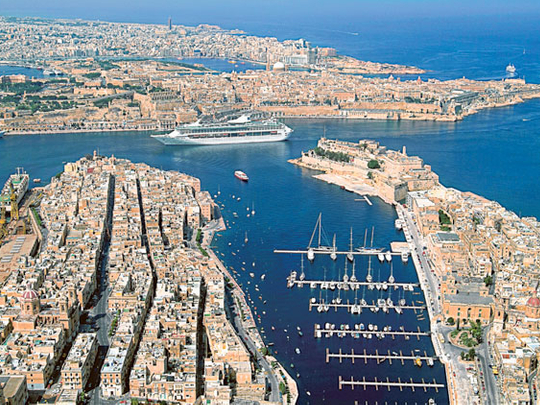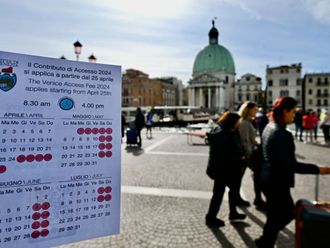
Valletta, Malta: Emirates airline is boosting the capacity of its daily flights to Malta as interest in travelling to the Mediterranean island grows.
The Dubai-based carrier changed from operating an Airbus A330 on the route to Malta International Airport, which flies via Larnaca in Cyprus, to an A340 at the beginning of October. And, with the flight continuing to sell out, Emirates will use a Boeing 777 from February 1, 2013 — giving a total of an extra 60 seats in economy class.
Emirates has been flying to Malta — a group of three islands located some 80 kilometres south of the Italian island of Sicily — since March 1998, and Malta office manager Paul Fleri Soler has been delighted by the popularity of the route.
“We have been operating daily since 2008 and, although we are not increasing frequency, we are increasing the size of the aircraft. The 777 is a big aircraft to fill between Malta and Cyprus, but it’s amazing because we started with the A340 from October 1 and every single flight is overbooked in economy,” Soler told Gulf News.
“You start saying to yourself ‘where are these people coming from?’ but it’s proven that once you put on capacity, people somehow come and use it. There is demand out there even though sometimes you don’t know about it. The prospects are looking really, really good.
“There are no plans for increasing frequency and also a direct flight from Dubai to Malta wouldn’t work, it wouldn’t be viable. But a lot of people stop off for holidays in Cyprus and Malta as the route stops in both places.
Shift
“We have introduced a lot of destinations for the local market. Before nobody here would have thought of going to the Maldives, Mauritius or the Seychelles, but they are going there now because Emirates flies there. Traditionally the Maltese used to go for their honeymoon to Europe, America or the Caribbean, but now that is shifting to Emirates routes in the east.
“We are the only east-bound carrier operating out of Malta. Luckily we don’t have competition from the likes of Etihad, GulfAir or Qatar. We could easily service the local requirements here with a daily flight — and not just passenger-wise too, cargo as well.”
Malta has a rich history thanks to its strategically important location in the Mediterranean, with empires such as the Phoenicians, Greeks, Carthiginians, Romans, Arabs, the Knights of St John and British all controlling the islands at some stage.
But it was the population of Libya who first tempted Emirates to add Malta to its network. “Primarily Malta was on the map for Emirates because of its strategic importance in assisting the Libyan market,” Soler explained.
“At that time in 1998 there were UN sanctions in Libya, so expats living there could not fly out of the country. Malta was like their gateway — they used to come to Malta by ship and fly out. There’s a very large expat population working in Libya, mostly from the Indian subcontinent, the Far East, but also North America and even Europe. So there were thousands and thousands of labourers and all these people were coming to Malta by ship on a daily basis — there was a big boom at that time.
Potential
“They were all flying out using the airlines available in Malta and at that time Emirates wasn’t flying here, but Air Malta had a flight to Dubai twice a week. People could then connect to the Emirates network from there — going to Colombo, Delhi, Bombay, wherever. So Emirates saw potential in that and began operating from here, starting with a twice weekly flight, at that time via Athens.
“After a number of years the sanctions on Libya were dropped and there was a time when Emirates were actually thinking of pulling out of Malta. But Emirates managed to stay here and the service was never interrupted.
“Then we changed the route, instead of via Athens we went via Libya — the flight went Dubai-Malta-Tripoli-Dubai. It flourished carrying all that traffic out of Libya and it was always packed. Three times a week became four and then it became a daily service. The Libya route eventually became so busy it became a standalone with a direct flight.
“Malta is a small place to sustain daily flights so we put it together with Cyprus, two small islands. It works.”












